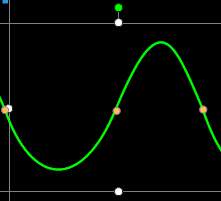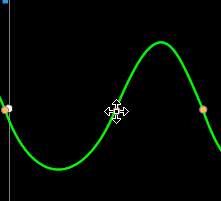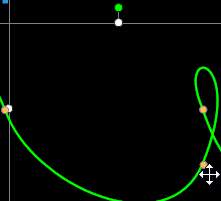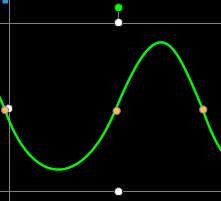CyberLink PowerDirector Help
Click on the Motion tab to add motion* to media clips, allowing them to move across the screen. You can choose from a number of predefined motion paths or create your own custom motion. You can also add a rotation effect to the media clips.
Note: * optional feature in CyberLink PowerDirector. Check the version table on our web site for detailed versioning information. |
Using a Motion Path Template
To add motion to media clips you can select a motion path template on the Motion tab that fits your requirements. Note that keyframes are added to the Position track of the PiP Designer keyframe timeline. These motion path templates have predefined motion in them, but you can customize the motion. See Customizing PiP Motion and Utilizing PiP Keyframes for detailed information on using keyframes to customize motion.
Customizing Motion
The PiP Designer uses keyframes to customize the motion of media clips. Keyframes are frames of your video that define the start and end points of an effect, which in this example is motion.
To customize the motion of media clips:
Note: once you are done customizing the media clip motion you can use the motion blur effect to make it look smother and more natural. See Applying Motion Blur for more information. |
•drag an existing keyframe to a new location in the preview window. The media clip will follow the modified path to get to the changed keyframe position.



•drag the path line to alter the path the media clip takes to get to the next keyframe.



•use the player controls to find a position on the motion path, and then click  on the Position track of the keyframe timeline to add a new keyframe at a new position, if required.
on the Position track of the keyframe timeline to add a new keyframe at a new position, if required.
Customizing the Speed of Media Clip Motion
You have full control over the speed to the media clip's motion.
Note: to change the speed of pre-designed PiP object animation, see Setting PiP Object Animation Speed. |
The following three factors determine the speed of the media clip's motion.
Note: on the Properties tab in Object Settings you can manually adjust the media clip's position at keyframes and use ease in/out to make the movement look smoother. See Changing Object Settings for more information. |
Duration of the Media Clip in the Timeline
The longer the duration of a media clip, the slower its motion is. For example, if the media clip is 10 seconds, it will take the clip 10 seconds to travel from the first Position keyframe to the last Position keyframe.
Distance Between Keyframes
The distance between each keyframe also contributes to the speed of the media clip motion. The further the distance between each keyframe, the quicker the media clip needs to move to get to the next keyframe.
Keyframe Timeline
The keyframe timeline is located below the preview window. Each keyframe in the motion path has a corresponding marker on the keyframe timeline.
Note: if you cannot find the keyframe timeline in the PiP Designer, just click the |

If the media clip on the timeline has a duration of 10 seconds, the keyframe timeline is 10 seconds long. To increase the speed of a media clip's motion, drag a keyframe marker closer to previous keyframe marker.

Saving a Custom PiP Motion Path
Once you finish modifying your PiP motion path you can save it for future use. To save a motion path, click on  to save it as a custom path. It is then available in motion path list the next time you want to use it.
to save it as a custom path. It is then available in motion path list the next time you want to use it.
Customizing Media Clip Rotation
Select the Rotation Settings option to customize the rotation of moving media clips. Use the slider to set the amount the media clip will rotate as it moves across the screen. Select whether the media clip rotates counter clockwise, or clockwise.
Note: click the |
Applying Motion Blur
Select the Motion blur* option to make media clip movement appear smoother, giving it a more natural and authentic look.
Note: * optional feature in CyberLink PowerDirector. Check the version table on our web site for detailed versioning information. |
Once selected, use the available sliders as follows:
•Blur length: drag this slider to set the duration (number of frames) you want blended into a single frame (the blur). Dragging the slider right will apply more of a blur to the moving media clip.
•Blur density: drag this slider to set the number of samples (of the media clip) used per frame. Dragging the slider right will make the media clip less blurry as it adds samples to fill the missing content caused by the movement.
 button under the preview window to display it.
button under the preview window to display it. button to reset the rotation amount to 0. Any added rotation is removed.
button to reset the rotation amount to 0. Any added rotation is removed.